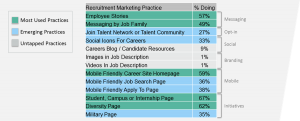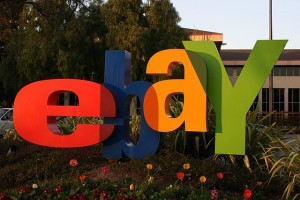After I graduated college, I heard countless times that my network would be one of the most valuable things in my career. And to top it off, living in DC embodies the phrase of “it’s all who you know.”
The idea of networking and utilizing my own relationships didn’t resonate with me, until I landed my first job out of school through my network and then landed a job here at Contactually under the same circumstance.
Networking is essential in building relationships, but you can’t just continually network with people and expect returns. You have to pull up from the actual action and assess things inside your network. The insights that you can glean from your network are bountiful.
We’ve discussed ways to get to know your prospects, but how do you get to know your network even more? Which insights are the most important to grow your contact base even further?
Here are the top 10 insights you need to know to grow your network:
1. Social Media
We’ve discussed how you can follow-up on other channels besides email, especially social media. Knowing that, it would be wise to identify what their social media handles are and connect with them on each of those channels.

Social media has become another wide and expansive communication channel.74% of all Internet users are on a social media platform so, if you aren’t using at least one of the platforms, you will be left behind and your network could suffer.
2. Where do they hang out?
Since you’ve connected with these individuals on multiple social media accounts, you’ll be able to figure out where most of your network hangs out. Are these people constantly interacting on Twitter? If the answer is yes, you should move your communications to Twitter, so then you can better communicate with your audience.
Look to see where your biggest audience is on each social media channel, do you have more followers on Twitter than connections on LinkedIn? Evaluate where you network engages with your content the best. Do you notice that more that more people retweet you than like your posts on LinkedIn? Those are clear signs where your audience and network hangs out.
3. Demographic Data
Where do you contacts live? What are their genders? Can you find out their average age? Demographic data points are implicit qualities that do not change daily. It’s good to find out these pieces of information because it can help answer other questions. For example if most of your network lives in California, then you should probably contact these individuals on an optimal PST time.
I can see that my network on Twitter is mainly based on the east cost, so I should stick to EST times to post.

4. How are individuals connected with each other?

Every time I log into LinkedIn, I see people who I should connect with. I can see our mutual connections and how our professional network relates. You can see this in Facebook as well, but it shows you the friends you have in common with each other.
Knowing the mutual connections between two people and even how people are connected in your network is quite beneficial especially in determining how you can set up more connections and expand your network even more.
5. Active vs. Inactive Contacts
If you’re network is filled with 100% active contacts, then I commend you because you are a relationship badass. However, in reality there will be a percentage of active vs. inactive contacts and knowing that percentage allows you to identify who you need to reactivate or if you just need to do a cleanup on your over all contact database.
Seeing this percentage, also show if you’ve been active with most of your contacts. It’s a two way street in that it if a contact is inactive, maybe it’s because you haven’t contacted them to revive the relationship.
Want to calculate your Active Contact Percentage? Download our Formulas for Your Business Relationships cheat sheet to see a quick list of all of the formulas you need to see how your relationships are performing.
6. When was the last time you contacted these individuals?
To piggyback off of the Active vs. Inactive contacts, when did you last contact these people in your network?
These contacts may be more active because you contacted them (June 18, 2015), and maybe the inactive ones were contacted last quarter. Both of these insights will go hand and hand with each other, and the other factor to consider is your own communication habits. Do you typically contact people a week later? It may not be the most effective communication strategy, but neither is over-communicating with them.
Look into when you last contacted someone in your network to gauge when you should follow up with them, or if you send a message to catch up. This will determine what the best next step will be in continuing to cultivate your network.
7. What was the last action you took with them?
You can’t send unlimited follow-ups to someone. Well you can, but a follow-up becomes exponentially ineffective and less valuable when you are just following up expecting a response.
This differs from when the last contact time/date as it is answering what specific action did you take with these individuals. From follow-ups to coffee chats, identifying the last interaction can help set up with what should come next in order to keep building that relationship.
8. What is your relationship with these contacts?
How did you meet these contacts? Did you connect through an event? Were you introduced to each other by a friend?
Determining your relationship with these contacts can help for segmentation purposes, show you potential gaps in your professional network (whether you need to meet more people in your industry, or more business opportunities need to fill your network), and
Answering this question can provide a baseline on how to optimize to meet more individuals to add to your network. If you notice that majority of your relationships have started through an introduction from a mutual connection, seek more of those out. Ask your contacts, if they can connect you with anyone and in return you can open your LinkedIn network to them to see if they would like to be connected to anyone.
9. What are their similarities?
My network consists of young professionals and most mainly work in marketing. Drawing the similarities from your network can identify how you should communicate and message them effectively.
Other similarities like interests, maybe in sports or pop culture, can lay out a pathway for you to connect at a more down-t0-earth level. For example, maybe a few people in your network love Game of Thrones like you, you could shoot them an email talking about the season 5 finale and how crazy it was. It’s a simple connection, but knowing these similarities can be impactful.

10. How can you help these individuals?
About a week ago, I connected with an amazing marketer and she mentioned how she is always willing to network and connect more individual with each other in her network.
And frankly, I think that is amazing and generous. In DC, there isn’t a huge population of marketers, especially at fellow startups and tech companies. So, the offer that this marketer gave me to introduce me to other marketers, is so helpful to me.
Can you introduce these connections to other individuals in your network? What about recommending other software or services to them that would help their business?
Asking yourself how you can individually help these contacts in your network allows you to give back and add more value into your network. It’s depositing money into your network account for a solid return on investment, of course as long as if your help is truly connecting with your audience.
Start Gathering Your Insights
Networking isn’t easy and discovering these insights will take a little bit of time, but once you you get into the right rhythm your network will be able to grow more than you could imagine.
What are some of the ways you’re gathering insights from your network? Let us know in the comments below.
(199)




